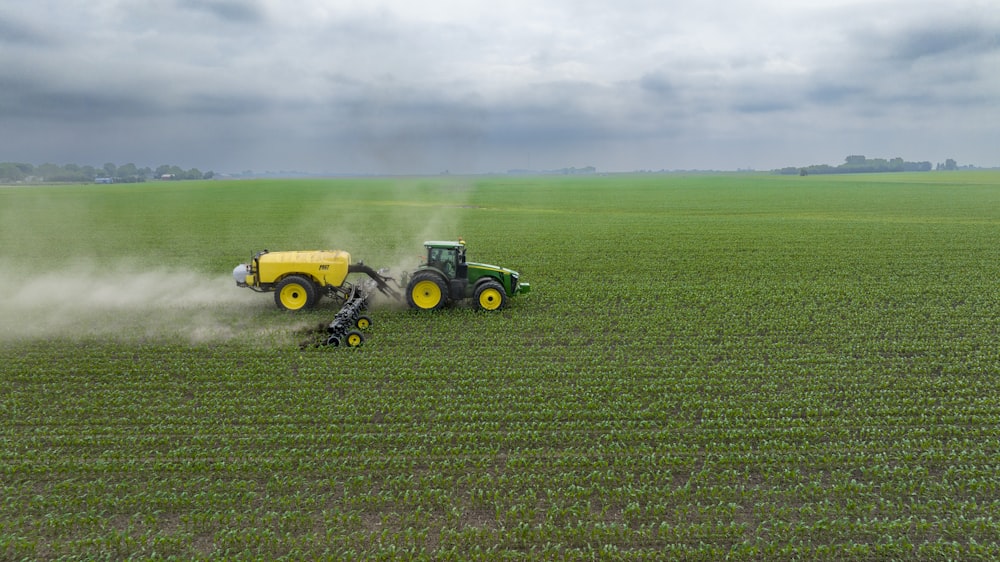Welcome to Carbon Risk — helping investors navigate 'The Currency of Decarbonisation'! If you haven’t already subscribed please click on the link below, or try a 7-day free trial giving you full access.
By subscribing you’ll join more than 3,000 people who already read Carbon Risk. You can also follow my posts on LinkedIn and benefit from my referral program. Thanks for reading!
Estimated reading time ~ 11 mins

New regulations introduced in Europe this January, from July in Australia, and sometime during 2025/26 in California will force food and drink producers to tackle one of the hidden carbon footprints in their supply chains: fertilisers.
Climate disclosure laws will put food producers under intense pressure to delve into the far reaches of their supply chain, to understand and report on how fertiliser is being used by their ingredient suppliers. No mean feat given the enormity and complexity of modern food supply chains. But with ~87% of their emissions under Scope 3 they will have no choice (see Scope creep: Mandatory climate disclosures target under-reported carbon risk).
Why the focus on fertiliser? Synthetic fertiliser has been called one of the greatest inventions of the 20th Century. The Haber-Bosch process forms the basis to today’s industrial scale production of fertiliser. It involves burning natural gas to produce hydrogen, combined with nitrogen from the air, and then subjected to extremely high pressures and temperatures to synthesise ammonia.
The process enabled agricultural fertilisers to be produced on an enormous scale, and dramatically increased global agricultural productivity. Some estimates suggests that without synthetic fertiliser almost half the world’s population would not be alive today - at least based on current high protein diets.
Yet synthetic fertiliser has a huge environmental impact. The production and use of synthetic fertilisers is responsible for emitting ~1.3 Gt CO2e, according to research published by the University of Cambridge (UoC). One-third of the emissions take place during the production of the fertilisers, with the remaining two-thirds emitted after they are spread on the land.1
The organic approach isn’t any better. UoC estimates indicate that manure is also responsible for emitting ~1.3 Gt CO2e. An estimated 43% of manure is applied to soils as fertiliser, a similar amount is typically left on the pasture, with the remainder lost in the waste management process. UoC analysis finds that emissions from the use of manure are ~1.9 times higher than an equivalent nitrogen content of synthetic fertilisers, mostly due to storage and transport emissions (see Better in than out: The worlds largest meat and dairy corporations are under pressure to cut greenhouse gas emissions).
In total, the production and use of manure and synthetic fertilisers was responsible for 2.6 Gt CO2e in greenhouse gas (GHG) emissions in 2019. At around 5% of global emissions that’s more than global aviation and shipping combined. The sum total of the GHG emissions is significant, but perhaps what’s even more important is the composition of those gases.
Just under half (44%) of the emissions, amounting to around 1.15 Gt CO2e, are in the form of nitrous oxide (N2O), a GHG with almost 300 times the warming potency of CO2, and one that also lasts in the atmosphere for a long time (~120 years). Almost 0.5 Gt CO2e is emitted from the use of synthetic fertiliser, 0.3 Gt CO2e is emitted due to manure management, and an additional 0.3 Gt CO2e is emitted after manure is applied to the land.
Excessive use of nitrogen fertiliser also results in air, land, and water pollution. For example, once excess nitrogen gets into the aquatic environment, it can cause a rapid increase in toxic algal blooms that deplete oxygen levels. High nitrate levels can leave “dead zones” behind, places where little or no organisms can survive.
Based on the FAO’s forecast for global fertiliser demand in 2050, overall GHG emissions from synthetic fertiliser production and use are projected to rise by 28% to 1.66 Gt CO2e, with a commensurate increase in nitrous oxide emissions and nitrogen pollution. That’s if nothing changes in how fertiliser is produced and applied to the land.


